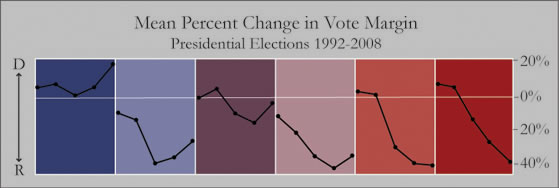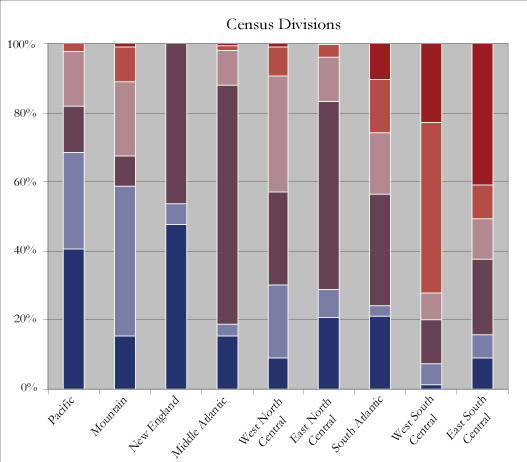Understanding the Shifts: Geography


A regional analysis of cluster distribution indicates that the south is a bastion of Republican support. The majority of counties in the Midwest, Northeast and West became more Democratic in the 2008 election. These regions also tend to be the site of shift-prone counties (blue purple and light blue).

Using the U.S. Census defined “divisions” distinguishes inter-regional differences. The largely rural Mountain region unsurprisingly has more increases in Republican support than the Pacific region, which has been predominantly Democratic in the past two election cycles. New England has been more consistently democratic over time (blue) than the Middle Atlantic. In the Midwest, the East North Central appears to be more shift-prone than West North Central, which is a mosaic of all sorts of voting patterns. In the South, the West and East South Central are more significantly Republican-dominated than the South Atlantic, which has more Democratic and shift-prone clustered counties.
In sum, there clear geographical differences in voting shifts. The counties with the most dramatic shifts in party support (light blue, blue purple and light purple) dominate in several divisions, including the Middle Atlantic, West & East North Central and the South Atlantic. A strategic focus on these areas could produce significant gains for a candidate, as seen in the 2008 elections.